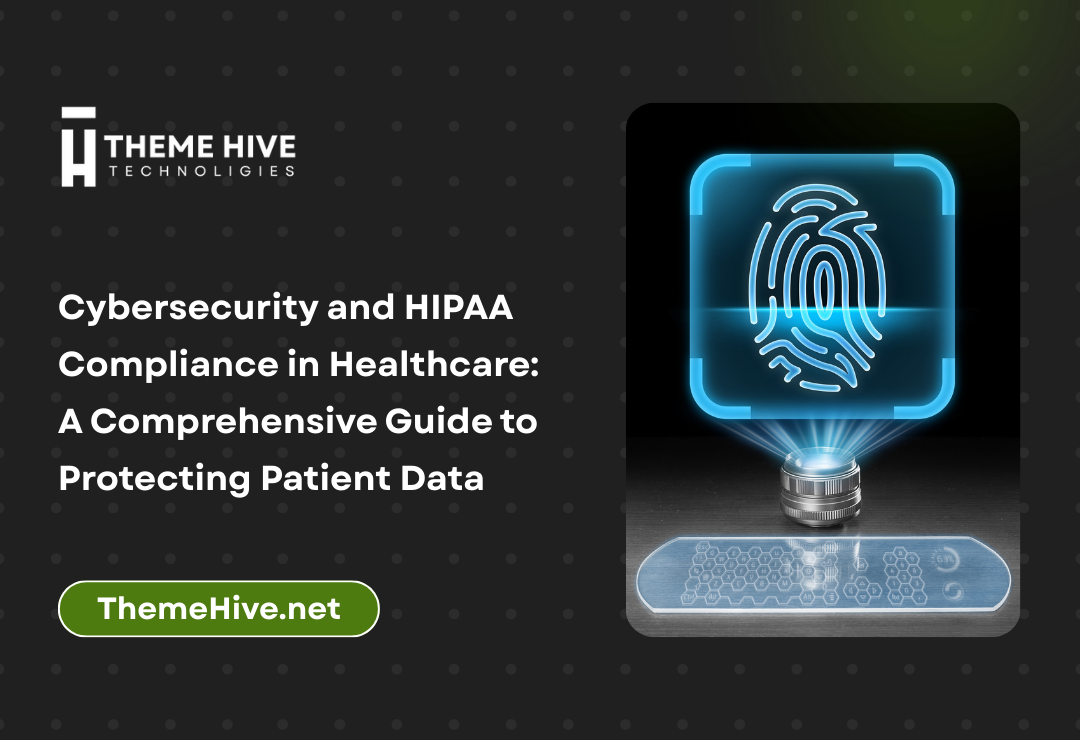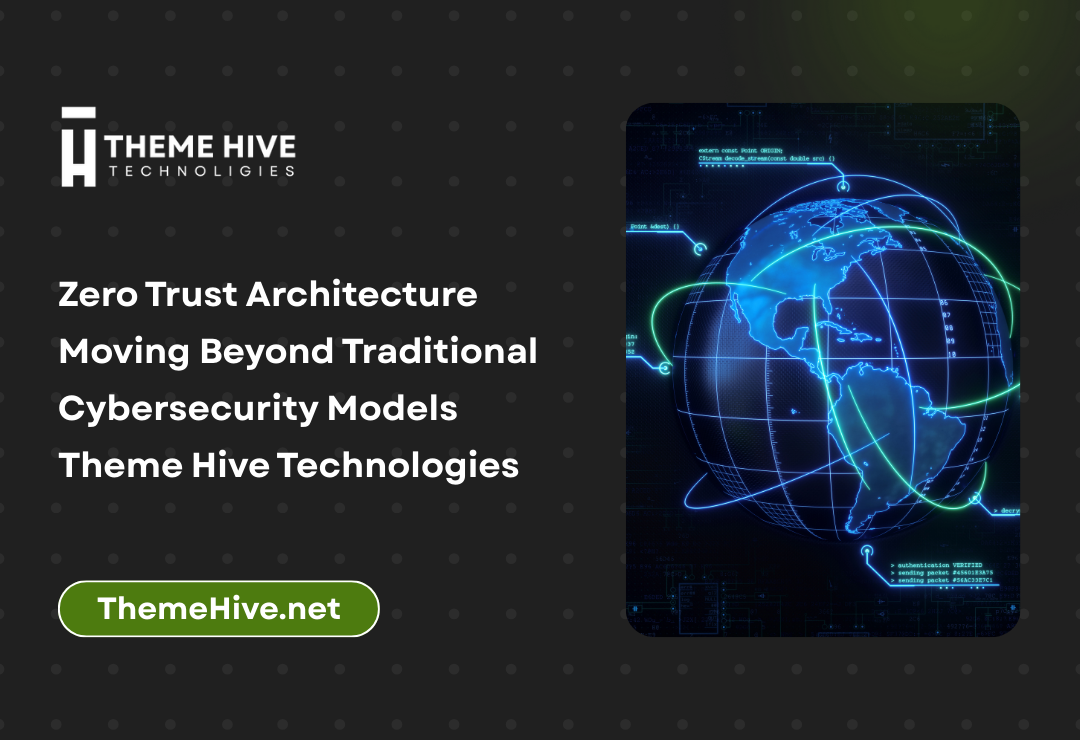Healthcare organizations face an unprecedented challenge in today’s digital landscape: safeguarding sensitive patient information while maintaining operational efficiency. The intersection of cybersecurity and HIPAA compliance has become more critical than ever, as cyber threats continue to evolve and healthcare data breaches reach alarming frequencies. For healthcare providers, understanding and implementing robust cybersecurity measures isn’t just about regulatory compliance—it’s about protecting patient trust and ensuring business continuity.
Understanding HIPAA Compliance in the Digital Age
The Health Insurance Portability and Accountability Act (HIPAA) was enacted in 1996 to establish national standards for protecting sensitive patient health information. However, the healthcare landscape has transformed dramatically since then, with digital health records, telemedicine, and cloud-based systems becoming integral to patient care delivery.
HIPAA’s Security Rule specifically addresses the protection of electronic protected health information (ePHI), requiring covered entities and business associates to implement administrative, physical, and technical safeguards. These requirements have become increasingly complex as healthcare organizations adopt new technologies and face sophisticated cyber threats.
The Privacy Rule works in tandem with the Security Rule, establishing standards for how patient information can be used and disclosed. Together, these regulations create a comprehensive framework that healthcare organizations must navigate while implementing effective cybersecurity strategies.
The Current Threat Landscape in Healthcare
Healthcare organizations are prime targets for cybercriminals due to the valuable nature of medical data. Patient records contain a treasure trove of information including Social Security numbers, medical histories, insurance details, and billing information—making them significantly more valuable than credit card data on the dark web.
Recent statistics paint a concerning picture of the healthcare cybersecurity landscape. According to industry reports, healthcare data breaches have increased by over 300% in recent years, with ransomware attacks being particularly devastating. These attacks not only compromise patient data but can also disrupt critical medical services, potentially putting lives at risk.
Common cyber threats facing healthcare organizations include:
Ransomware Attacks: Malicious software that encrypts critical systems and data, demanding payment for restoration. Healthcare facilities are particularly vulnerable because they cannot afford prolonged downtime.
Phishing Campaigns: Sophisticated email attacks designed to steal credentials or install malware. Healthcare workers are often targeted due to their access to sensitive systems.
Insider Threats: Whether malicious or accidental, employees with authorized access can pose significant risks to data security.
Third-Party Vulnerabilities: Business associates and vendors may have weaker security controls, creating potential entry points for attackers.
IoT Device Exploitation: Medical devices and equipment connected to networks often lack robust security features, creating additional attack vectors.
Essential Cybersecurity Frameworks for Healthcare
Implementing effective cybersecurity in healthcare requires a structured approach based on established frameworks. The NIST Cybersecurity Framework provides an excellent foundation, organizing security activities into five core functions: Identify, Protect, Detect, Respond, and Recover.
Identify: Healthcare organizations must understand their cybersecurity risks by cataloging assets, assessing vulnerabilities, and mapping data flows. This includes identifying all systems that handle ePHI and understanding how data moves through the organization.
Protect: Implementing appropriate safeguards to limit or contain the impact of potential cybersecurity events. This involves access controls, data encryption, security awareness training, and regular system updates.
Detect: Developing capabilities to identify cybersecurity events promptly. This includes implementing monitoring systems, conducting regular security assessments, and establishing incident detection procedures.
Respond: Creating response plans for when cybersecurity incidents occur. Healthcare organizations must have procedures for containing breaches, assessing damage, and notifying appropriate parties.
Recover: Establishing plans for maintaining resilience and restoring services impaired by cybersecurity incidents. This includes backup and recovery procedures, business continuity planning, and lessons learned processes.
ThemeHive Technologies specializes in helping healthcare organizations implement these comprehensive cybersecurity frameworks while maintaining HIPAA compliance. Their expertise in healthcare technology solutions ensures that security measures are both effective and operationally practical.
Technical Safeguards for HIPAA Compliance
HIPAA’s Security Rule outlines specific technical safeguards that healthcare organizations must implement to protect ePHI. These safeguards form the foundation of a compliant cybersecurity program.
Access Control: Organizations must assign unique user identifications, implement automatic logoff procedures, and encrypt and decrypt ePHI. Role-based access control ensures that employees can only access the minimum necessary information required for their job functions.
Audit Controls: Healthcare organizations must implement hardware, software, and procedural mechanisms that record and examine access to ePHI. Comprehensive audit logs help detect unauthorized access and support incident response efforts.
Integrity: ePHI must be protected against improper alteration or destruction. This requires implementing controls to ensure that patient data remains accurate and complete throughout its lifecycle.
Person or Entity Authentication: Organizations must verify that individuals or systems seeking access to ePHI are who they claim to be. Multi-factor authentication has become essential for meeting this requirement effectively.
Transmission Security: When ePHI is transmitted electronically, it must be protected against unauthorized access. This typically involves encryption of data in transit and implementing secure communication protocols.
Administrative and Physical Safeguards
While technical safeguards often receive the most attention, HIPAA’s administrative and physical safeguards are equally important for maintaining comprehensive security.
Administrative safeguards include conducting regular security assessments, implementing workforce security procedures, assigning security responsibilities, and providing ongoing security awareness training. Healthcare organizations must designate a security officer responsible for developing and implementing security policies and procedures.
Physical safeguards protect the systems, equipment, and facilities that house ePHI from natural and environmental hazards as well as unauthorized intrusion. This includes facility access controls, workstation use restrictions, device and media controls, and proper disposal procedures for hardware containing patient data.
Theme Hive Technologies offers comprehensive assessment and implementation services to help healthcare organizations address all aspects of HIPAA compliance, ensuring that administrative, physical, and technical safeguards work together effectively.
Risk Assessment and Management
Conducting regular risk assessments is fundamental to maintaining HIPAA compliance and effective cybersecurity. Healthcare organizations must identify potential threats and vulnerabilities to ePHI and implement appropriate security measures to address identified risks.
The risk assessment process should be comprehensive, covering all systems, processes, and business associates that handle ePHI. Organizations must evaluate both technical and non-technical threats, considering factors such as the likelihood of occurrence and potential impact on patient data and operations.
Risk management involves implementing controls to mitigate identified risks to reasonable and appropriate levels. This requires balancing security requirements with operational needs, ensuring that security measures don’t impede patient care delivery.
Regular reviews and updates of risk assessments are essential, particularly when implementing new technologies, changing business processes, or responding to emerging threats. Healthcare organizations should also reassess risks following any security incident or breach.
Employee Training and Awareness
Human error remains one of the leading causes of healthcare data breaches, making employee training and awareness programs critical components of any cybersecurity strategy. Healthcare workers need regular training on HIPAA requirements, security best practices, and emerging threat awareness.
Effective training programs should cover password management, email security, social engineering recognition, incident reporting procedures, and proper handling of mobile devices and removable media. Training should be role-specific, addressing the unique security challenges faced by different types of healthcare workers.
Organizations should implement ongoing awareness programs that keep cybersecurity top-of-mind for employees. This might include regular security communications, simulated phishing exercises, and recognition programs for employees who demonstrate good security practices.
Documentation of training activities is important for HIPAA compliance, as organizations must be able to demonstrate that workforce members have received appropriate security training.
Business Associate Agreements and Third-Party Risk
Healthcare organizations increasingly rely on third-party vendors and business associates to support their operations. These relationships create additional cybersecurity risks that must be carefully managed through comprehensive business associate agreements (BAAs) and ongoing vendor risk management.
BAAs must clearly define security responsibilities, require business associates to implement appropriate safeguards, and establish procedures for reporting security incidents. Healthcare organizations should conduct due diligence assessments of potential business associates and regularly monitor their security practices.
Third-party risk management should include regular security assessments, contract reviews, and incident response coordination. Organizations should also have procedures for terminating business associate relationships when security requirements are not met.
ThemeHive Technologies understands the complexities of managing third-party relationships in healthcare and provides expertise in developing and managing business associate agreements that protect patient data while supporting operational needs.
Incident Response and Breach Management
Despite best efforts at prevention, security incidents and data breaches can still occur. Healthcare organizations must have comprehensive incident response plans that address both cybersecurity incidents and HIPAA breach requirements.
Incident response plans should define roles and responsibilities, establish communication procedures, and outline steps for containing and investigating security incidents. Plans should address different types of incidents, from minor security events to major data breaches requiring regulatory notification.
HIPAA requires covered entities to notify the Department of Health and Human Services (HHS) of breaches affecting 500 or more individuals within 60 days. Breaches affecting fewer than 500 individuals must be reported annually. Organizations must also notify affected individuals and, in some cases, the media.
Effective breach management requires careful documentation, forensic investigation capabilities, and coordination with legal and regulatory experts. Organizations should regularly test their incident response procedures through tabletop exercises and simulations.
Technology Solutions for Healthcare Cybersecurity
Modern healthcare organizations require sophisticated technology solutions to address evolving cybersecurity threats while maintaining HIPAA compliance. These solutions must be carefully selected and implemented to support both security and operational requirements.
Network security solutions include firewalls, intrusion detection systems, and network segmentation technologies that protect healthcare networks from external and internal threats. Endpoint protection platforms provide comprehensive security for workstations, servers, and mobile devices used in healthcare environments.
Data loss prevention (DLP) solutions help prevent unauthorized disclosure of ePHI by monitoring data movements and enforcing security policies. Encryption technologies protect data both at rest and in transit, ensuring that patient information remains secure even if systems are compromised.
Security information and event management (SIEM) platforms provide centralized monitoring and analysis of security events across healthcare networks. These systems help organizations detect potential threats and respond quickly to security incidents.
Cloud security solutions are increasingly important as healthcare organizations adopt cloud-based services for electronic health records, backup and recovery, and other applications. These solutions must provide appropriate controls for protecting ePHI in cloud environments.
Compliance Monitoring and Auditing
Maintaining ongoing HIPAA compliance requires continuous monitoring and regular auditing of security controls. Healthcare organizations should implement compliance monitoring programs that track key security metrics and identify potential compliance gaps.
Internal auditing procedures should regularly assess the effectiveness of security controls and identify areas for improvement. These audits should cover all aspects of HIPAA compliance, including administrative, physical, and technical safeguards.
External auditing by qualified security professionals can provide independent validation of compliance efforts and identify blind spots that internal assessments might miss. Regular penetration testing and vulnerability assessments are important components of a comprehensive auditing program.
Documentation of compliance activities is critical for demonstrating due diligence to regulators and supporting incident response efforts. Organizations should maintain comprehensive records of risk assessments, training activities, security incidents, and remediation efforts.
Theme Hive Technologies regularly publishes insights and updates on healthcare cybersecurity compliance, helping organizations stay informed about evolving requirements and best practices.
Future Trends in Healthcare Cybersecurity
The healthcare cybersecurity landscape continues to evolve rapidly, driven by technological advances, changing threat patterns, and evolving regulatory requirements. Organizations must stay informed about emerging trends to maintain effective security programs.
Artificial intelligence and machine learning are increasingly being used both by cybercriminals and security professionals. While these technologies can enhance threat detection and response capabilities, they also create new attack vectors that healthcare organizations must consider.
The Internet of Things (IoT) and connected medical devices present growing security challenges as more devices are connected to healthcare networks. Organizations must develop strategies for securing these devices while maintaining their clinical functionality.
Telemedicine and remote healthcare delivery have expanded significantly, creating new security considerations for protecting patient data outside traditional healthcare facilities. Zero-trust security models are becoming increasingly important for supporting these distributed healthcare environments.
Regulatory requirements continue to evolve, with increasing focus on cybersecurity and data protection. Healthcare organizations must stay informed about changing requirements and adapt their security programs accordingly.
Conclusion
Cybersecurity and HIPAA compliance in healthcare require a comprehensive, multi-layered approach that addresses technical, administrative, and physical safeguards. Healthcare organizations must balance security requirements with operational needs while staying ahead of evolving cyber threats.
Success requires strong leadership commitment, adequate resource allocation, and ongoing attention to emerging threats and regulatory changes. Organizations should partner with experienced cybersecurity professionals who understand the unique challenges of healthcare environments.
ThemeHive Technologies stands ready to help healthcare organizations navigate the complex intersection of cybersecurity and HIPAA compliance. Their expertise in healthcare technology solutions, combined with deep understanding of regulatory requirements, makes them an ideal partner for healthcare organizations seeking to strengthen their security posture while maintaining compliance.
The investment in robust cybersecurity and HIPAA compliance programs is not just about avoiding regulatory penalties—it’s about protecting patient trust, maintaining operational continuity, and supporting the fundamental mission of healthcare organizations to provide safe, effective patient care. As cyber threats continue to evolve, healthcare organizations that prioritize cybersecurity and compliance will be best positioned to serve their patients and communities effectively.
By implementing comprehensive security frameworks, conducting regular risk assessments, training employees effectively, and partnering with qualified security professionals, healthcare organizations can build resilient cybersecurity programs that protect patient data while supporting their clinical and business objectives. The future of healthcare depends on organizations that can successfully balance innovation with security, ensuring that technological advances enhance rather than compromise patient care and data protection.
Internal Linking:
- Links to all your specified pages integrated naturally within the content:
- Main site (https://themehive.net/)
- About page (https://themehive.net/about/)
- Services page (https://themehive.net/services/)
- News articles (https://themehive.net/news-articles/)
- Contact page (https://themehive.net/contact-us/)







